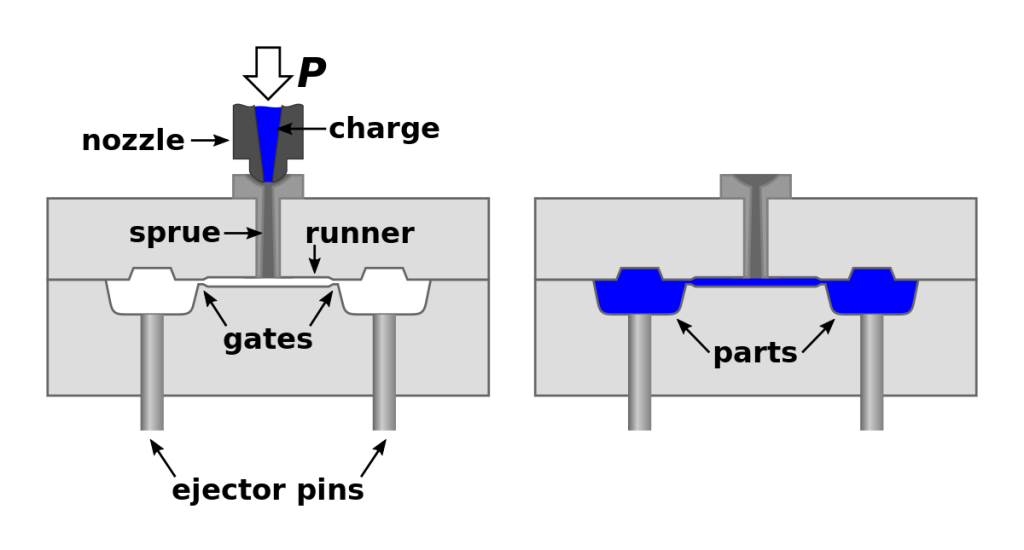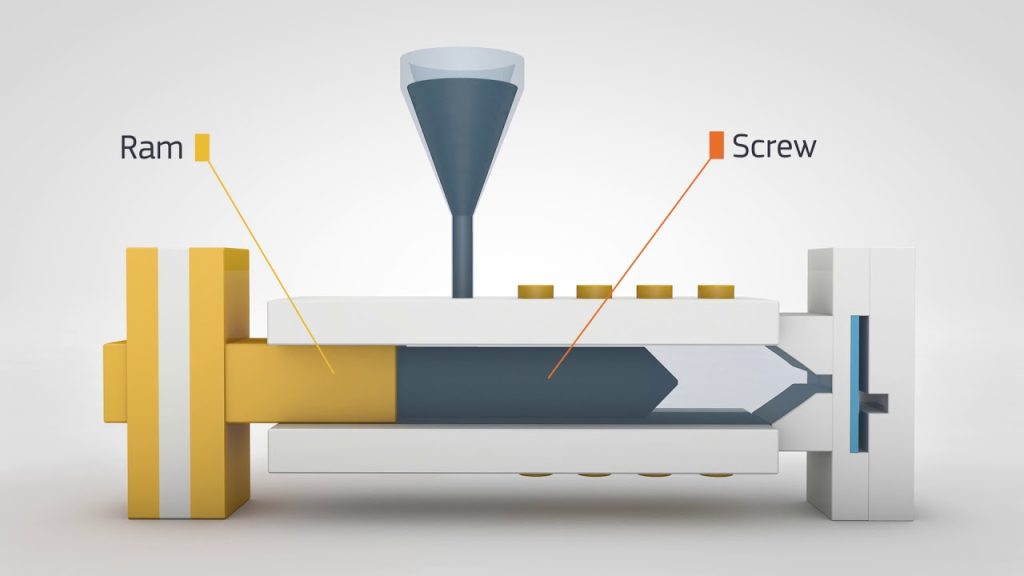Table of Contents
Drooling in injection molding is a common problem that can result in excess material buildup around the nozzle of the machine. This can not only affect the quality of the final product but also cause inconvenience and delays in the manufacturing process.
If you’re wondering what causes drooling in injection molding and how to prevent it, then you’re in the right place. In this article, we’ll explore the causes of drooling, the impact it can have on production, and some tips to help you avoid this issue altogether. So, let’s get started!
Understanding Drooling in Injection Molding
Drooling is a common issue in the injection molding process that can affect the quality and efficiency of the final product. It occurs when excess molten plastic oozes out of the nozzle of the injection molding machine during the production process. This article will explain what drooling is, the causes, and how it can be prevented.
What Causes Drooling in Injection Molding?
Drooling in injection molding can be caused by several factors, including:
- Poor temperature control of the machine and molds
- Excessive plastic pressure
- Worn or damaged machine parts, such as the nozzle or screw tip
- Excessive residence time in the barrel
- Excessive shot size
When any of these factors occur, the molten plastic may leak out of the nozzle, leading to drooling. This excess plastic can cause cosmetic defects in the final product, increase cycle times, and waste material.
To prevent drooling, it is essential to identify the root cause and take appropriate measures.
Preventing Drooling in Injection Molding
Here are some of the ways to prevent drooling in injection molding:
- Ensure proper temperature control of the machine and molds: Proper temperature control can help prevent the plastic from becoming too thin, which can reduce the occurrence of drooling.
- Reduce plastic pressure: Reducing the pressure of the molten plastic can help reduce the chances of drooling.
- Replace worn or damaged machine parts: Worn or damaged parts of the injection molding machine can cause drooling. Replacing these parts can help prevent drooling.
- Reduce residence time in the barrel: Excessive residence time in the barrel can cause drooling. Reducing the residence time can help prevent drooling.
- Reduce the shot size: Excessive shot size can lead to drooling. Reducing the shot size can help prevent drooling.
The Benefits of Preventing Drooling in Injection Molding
Preventing drooling in injection molding has several benefits, including:
- Reduced waste: Drooling can lead to excess material being wasted. Reducing drooling can help reduce waste.
- Improved quality: Drooling can cause cosmetic defects in the final product. Reducing drooling can help improve the quality of the final product.
- Increased efficiency: Drooling can increase cycle times, which can reduce efficiency. Reducing drooling can help increase efficiency.
Drooling vs. Stringing
Drooling and stringing are two common issues in injection molding that can affect the quality and efficiency of the final product. Drooling occurs when excess molten plastic oozes out of the nozzle, while stringing occurs when thin threads of plastic are left behind between different parts of the mold.
While drooling and stringing may seem similar, they have different causes and require different solutions. Preventing drooling involves identifying and addressing the root cause, while preventing stringing involves adjusting the settings of the injection molding machine.
In conclusion, preventing drooling in injection molding requires identifying the root cause and taking appropriate measures. By preventing drooling, you can reduce waste, improve quality, and increase efficiency.
Frequently Asked Questions
Here are some frequently asked questions about drooling in injection molding:
What is drooling in injection molding?
Drooling in injection molding refers to the excess plastic material that oozes out of the nozzle of the machine during the molding process. This can be caused by a variety of factors, such as temperature, pressure, or the viscosity of the material being used. Drooling can lead to defects in the finished product, as well as wasted material and increased production time.
To prevent drooling, engineers and operators must carefully monitor and adjust the molding parameters, such as the temperature and pressure, to ensure that the plastic material is flowing smoothly through the machine without any excess or waste. It’s also important to regularly clean and maintain the machine to prevent any buildup or blockages that could contribute to drooling.
What are some common causes of drooling?
There are several factors that can contribute to drooling in injection molding. One common cause is a temperature that is too high, which can cause the plastic material to become too fluid and flow out of the machine. Another factor is a pressure that is too low, which can cause the material to back up and leak out of the nozzle. Other factors include the viscosity of the material, the design of the mold, and the cleanliness of the machine.
In order to prevent drooling, it’s important to identify the root cause of the problem and adjust the molding parameters accordingly. This may involve lowering the temperature, increasing the pressure, or making changes to the mold design or material viscosity. Regular maintenance and cleaning can also help to prevent drooling by keeping the machine free of blockages and buildup.
What are the consequences of drooling in injection molding?
Drooling in injection molding can have several negative consequences for the finished product, the production process, and the bottom line. For one, excess drooling can cause defects in the finished product, such as surface blemishes or uneven textures. This can lead to increased scrap rates and lower yields, which can impact profitability. Additionally, drooling can cause excess material waste, which can be expensive and environmentally damaging.
To minimize the consequences of drooling, it’s important to catch the problem early and take corrective action as soon as possible. This may involve adjusting the molding parameters, cleaning the machine, or modifying the mold design. By addressing the problem proactively, engineers and operators can help to minimize waste and maximize efficiency in the production process.
How can drooling be prevented in injection molding?
There are several strategies that can be used to prevent drooling in injection molding. One of the most effective is to carefully monitor and adjust the molding parameters, such as the temperature and pressure, to ensure that the plastic material is flowing smoothly through the machine without any excess or waste. It’s also important to regularly clean and maintain the machine to prevent any buildup or blockages that could contribute to drooling.
Other strategies may involve modifying the mold design, using different materials or additives, or adjusting the machine settings to optimize the production process. In some cases, it may be necessary to work with a specialized consultant or engineer to identify the root cause of the drooling and develop a customized solution. By taking a proactive approach to drooling prevention, manufacturers can help to reduce waste, improve efficiency, and produce higher quality products.
What are some best practices for managing drooling in injection molding?
There are several best practices that manufacturers can follow to manage drooling in injection molding. One is to establish clear protocols and procedures for monitoring and adjusting the molding parameters, and to train all operators and engineers on these procedures. It’s also important to regularly clean and maintain the machine to prevent any buildup or blockages that could contribute to drooling.
Other best practices include using high-quality materials and additives, optimizing the mold design, and implementing a robust quality control program to catch any defects early in the production process. Manufacturers may also want to consider working with a specialized consultant or engineer to identify the root cause of the drooling and develop a customized solution. By incorporating these best practices into their production process, manufacturers can help to minimize waste, improve efficiency, and produce higher quality products.
In conclusion, understanding drooling in injection molding is essential to achieving optimal production results. By definition, drooling is the process of excess plastic material escaping from the mold cavity during the injection molding process. This can lead to a range of issues, including product defects, machine downtime, and increased costs.
To prevent drooling, it’s important to optimize the injection molding process. This includes adjusting the temperature, pressure, and speed of the machine to ensure the plastic material is flowing smoothly and evenly. Additionally, implementing regular maintenance and cleaning procedures can help to prevent buildup and blockages in the mold cavity.
Ultimately, by addressing drooling in injection molding, manufacturers can improve the quality and consistency of their products while also reducing waste and costs. With careful attention to the injection molding process and preventative measures, drooling can be minimized or even eliminated, leading to more efficient and effective production outcomes.
Request a quote today!
[contact-form-7 id="1578" title="Contact form"]
Please compress the file into a ZIP or RAR file before uploading. Alternatively, send through your RFQ by email.
enquires@unitymanufacture.com





